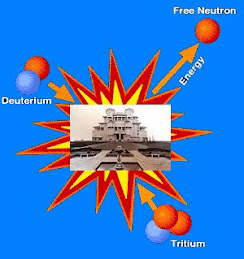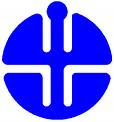| Nama Mata Kuliah | : | Termodinamika |
| Kode Mata Kuliah | : | FIS509 |
| Semester | : | 4 |
| Jenjang | : | S1 |
| Dosen | : | Saeful Karim,Drs.,M.Si. |
| Pokok Bahasan | : |


Menjadi Guru, Dosen, Peneliti, Ahli Teknik dan Spiritualis dalam Termodinamika
Sumber Dosen: Bpk. K.H., Drs. Saeful Karim, M.Si.
1. Pendiri dan Pimpinan Pondok Pesantren “Miyskatul Anwar, Cimahi”
2. Dosen Senior Pendidikan Fisika, FPMIPA, Universitas Pendidikan Indonesia & Tim Assessor Sertifikasi Guru Profesional
3. Penasehat Para Perwira Tinggi TNI, KSAD dan Tim Penyeleksi Para Jendral dalam bidang Spiritual
4. Penasehat Mentri Kesehatan Bidang Spiritual
Tujuan Mata Kuliah Termodinamika
Mahasiswa dapat memahami konsep dasar interaksi kalor, interaksi usaha, interaksi kalor dan usaha dan penerapannya, baik untuk sistem tertutup maupun untuk sistem terbuka dari sistem hidrostatik atau sistem kimia, sistem paramagnetik, sistem dielektrik, dan sistem-sistem termodinamika lainnya, dan memahami hukum-hukum termodinamika sebagai pengetahuan empiris serta dapat mengaplikasikannya.
Deskripsi Matakuliah
Matakuliah termodinamika ini isinya meliputi : Konsep-konsep dasar termodinamika, koordinat-koordinat termodinamika, matematika untuk termodinamika, sifat-sifat zat murni, termperatur dan hukum kenol termodinamika, sistem dan persamaan keadaan, usaha mekanik eksternal, panas dan hukum pertama termodinamika untuk sistem tertutup dan sistem terbuka, hukum kedua termodinamika, siklus Carnot dan reversibilitas, entropi, potensial termodinamika, dan perumusan lengkap termodinamika.
Buku Wajib
1) Yunus A. Cengel and Michael Boles. 1994. Thermodynamics An Engineering Approach, Second Edition, McGraw-Hill,Inc.
2) Mark W. Zemansky and Richard H.Dittman. 1982. Heat and Thermodynamics, Sixth Edition, McGraw-Hill, Inc. Diterjemahkan kedalam Bahasa Indonesia oleh The Houw Liong. 1986. Kalor dan Termodinamika, terbitan ke enam, Bandung, Institut Teknologi Bandung (ITB).
3) Saeful Karim. 2001. Matematika untuk Termodinamika (Diktat), Jurusan Pendidikan Fisika FPMIPA UPI.
Buku Referensi
4) Paul A Tipler. 1991. Physics for Scientiss and Engineers, Third Edition, Worth Publisher, Inc. Diterjemahkan kedalam Bahasa Indonesia oleh Lea Prasetio dan Rahmad W Adi. 1998. Fisika untuk Sains dan Teknik, Edisi ketiga, Jilid I, Erlangga.
5) Darmawan. 1980. Termodinamika, FMIPA ITB.
6) Dimiski Hadi. 1963, Termodinamika. Departemen Pendidikan dan Kebudayaan Direktorat Jenderal Pendidikan Tinggi.
Media
1. OHP
2. Alat –alat demonstrasi termodinamika.
Evaluasi
| Hal-hal yang dievaluasi dalam perkuliahan ini : tugas individu untuk setiap topik, ujian tertulis tengah semester, dan ujian tertulis akhir semester. |
Tugas Mahasiswa
Tugas khusus yang harus dikerjakan di rumah untuk setiap topik.
Thermodynamics
By: Prof. Francis Weston Sears, Ph.D.
Professor of Physics at The Massachusetts Institute of Technology
1. Thermodynamics Systems
a. Introduction
The science of thermodynamics deals with relations between heat and work. It is based on two general laws of nature, the first and second laws of thermodynamics. By logical reasoning from these laws it is possible to correlate many of the observable properties of matter, such as coefficients of expansion, compressibility, specific heat capacities, vapor pressures, and heats of transformation.
The principles and methods of thermodynamics are used by the mechanical engineer in the design of steam engines and turbines, internal combustion engines, jet engines, and refrigerators, and by the chemical engineer in practically every process involving a flow of heat or a problem in chemical physics consist in large part of the applications of thermodynamic principles to chemistry.
b. Thermodynamics Systems
c. State of a system
d. Processes
e. Temperature and Thermometry
f. The Constant volume gas thermometer. Thermodynamic temperature
g. The International Temperature Scale
2. Equations of State
a. Intensive and extensive variables
b. Equations of State
c. Equation of state of an ideal gas
d. Other equations of state
e. P-V-T surfaces
3. Work
a. Work
b. Work depends on path
c. Partial derivatives
d. Coefficient of expansion and compressibility
4. The First Law of Thermodynamics
a. The first law of thermodynamics
b. Heat depends on path
c. Heat capacity
d. Specific heat capacity
e. More relations between partial derivatives
5. Some Consequences of The First Law
a. The Energy Equation
b. T and V independent
c. T and P independent
d. P and V independent
e. Internal Energy of Gases
f. Difference between specific heat capacities
g. Adiabatic processes
h. The Joule Experiment
i. The Joule-Kelvin or porous experiment
j. Enthalpy
k. Energy equation of steady flow
l. The Carnot cycle
6. Changes of Phase
a. P-V-T surfaces for real substances
b. Critical constants of a van der Waals Gas
c. Heats of Transformation
d. Specific heat capacity of saturated
7. The Second Law of Thermodynamics
a. The second law of thermodynamics
b. Efficiencies of reversible engines
c. The Kelvin temperature scale
d. Absolute Zero
e. The Clausius-Clapeyron Equation
f. Derivation of Stefan’s Law
8. Entropy
a. The Clausius inequality
b. Entropy
c. Calculation of Changes in Entropy
d. Entropy Changes in Irreversible Processes
e. The Principle of Increase of Entropy
9. Combined First and Second Laws
a. Combined first and second laws
b. Entropy of an ideal gas
c. Reversible adiabatic processes
d. Temperature-entropy diagrams
e. The Helmholtz Function and Gibbs function
f. The Maxwell Equation
g. Dependence of Vapor pressure on total pressure
h. The Joule-Kelvin inversion curve
i. The Gibbs-Helmholtz Equation
j. Thermodynamics of Magnetism
10. Some Engineering Applications of Thermodynamics
a. Thermodynamics Properties of Steam
b. The Carnot Steam Cycle
c. The Reciprocating Steam Engine and the Turbine
d. The Rankine Cycle
e. The Rankine Cycle with superheat
f. Methods of Increasing Efficiency
g. The Refrigeration Cycle
h. The Gas Refrigerator
11. Kinetic Theory of an Ideal Gas
a. Introduction
b. Basic Assumptions
c. Collisions with the walls
d. Equation of State of an ideal Gas
e. Collisions with a moving wall
f. The Clausius Equation of State
g. The van der Waals Equation of state
12. The Distribution of Molecular Velocities
a. The distribution of molecular velocities
b. Evaluation of α and α and β
c. The Error Function
d. The Energy Distribution Function
e. Molecular Beams
f. Experimental Verification of Maxwell Velocity Distribution
g. The Principle of Equipartition of Energy
h. Classical Theory of Specific heat capacity
i. Specific heat capacity of Solid
13. Transport Phenomena
a. Mean free path
b. The distribution of free paths
c. Coefficient of viscosity
d. Thermal Conductivity
e. Diffusion
14. The Maxwell-Boltzmann Statistics
15. Applications of The Boltzmann Statistics
16. Quantum Statistics
17. Fluctuations
See Also:
Sumber:
1. Perkuliahan Termodinamika Fisika UPI
2. Wikipedia
3. http://tofi88sunda.blogspot.com/2008/09/5.html
Catatan: Laman ini diperbaharui apabila ada kesalahan-kesalahan.






Tidak ada komentar:
Posting Komentar